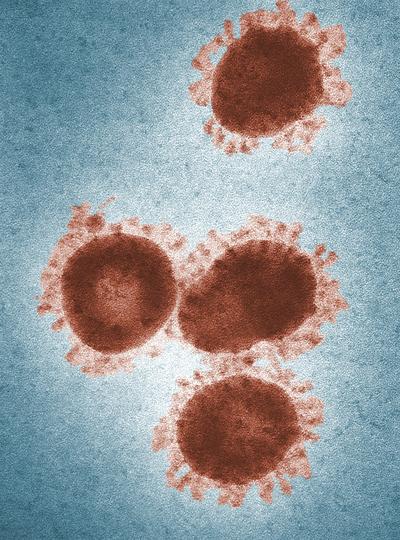
The Morbidity and Mortality Weekly Report (MMWR) is a weekly publication by the Centers for Disease Control and Prevention that publicizes the latest epidemiological advancements and research related to public health.In the May 6, 2022 MMWR, an article appeared discussing the arthropod-borne viruses, or arboviruses, that are transmitted to humans through the bite of mosquitoes and ticks. West Nile virus (WNV) is mainly transmitted by Culex species mosquitoes and is the leading cause of domestically acquired arboviral disease in the United States. Other notable arboviruses cause occasional infections and sporadic outbreaks sometimes. This report talks about the data for nationally notifiable domestic arboviruses in the United States reported to the CDC in 2020. This report should also serve as a reminder that the world is interconnected, and diseases that may be endemic in other countries may easily cause outbreaks in different countries, including the United States (Source: CDC).
The report reveals that forty-four states had reported 884 cases of domestic arboviral disease, including those caused by West Nile (731) and La Crosse (88). Also, a total of 559 cases of neuroinvasive WNV disease were reported for a rate of 0.17 cases per 100,000 people. The report also provides an important warning to health care providers. “Because arboviral diseases continue to cause serious illness and the locations of outbreaks vary annually,” the report says, “health care providers should consider arboviral infections in patients with aseptic meningitis or encephalitis that occur during periods when ticks and mosquitos are active, perform recommended diagnostic testing, and and promptly report cases to public health authorities to guide prevention strategies and messaging” (Source: CDC).
The transmission cycle of arboviruses is maintained between arthropods and vertebrae hosts, including humans and other animals. Humans, in the United States, generally become infected when bitten by an infected mosquito or ticks and are occasionally infected by other routes, such as blood transfusions and organ transplants. Most human cases are asymptomatic, but when they are symptomatic, these infections are manifested as systemic febrile illness and sometimes as neuroinvasive disease. Neuroinvasive cases are manifested as meningitis, encephalitis, acute flaccid paralysis or unspecified neurological signs. To monitor arboviruses efficiently, most endemic arboviral diseases are notifiable nationally and get reported by state health departments to the CDC through ArboNET, which is the national arboviral disease surveillance system (Source: CDC).
The highest incident rates, or new cases detected, of neuroinvasive WNV disease were reported in South Dakota and Nebraska. However, the largest numbers of neuroinvasive cases were reported from California, Texas, Florida and Illinois. WNV disease incidence rates increased with age, up to 0.49 per 100,000 in people over 70. In terms of La Crosse virus disease cases, the highest reporting cases were in Ohio and North Carolina. Younger people seemed to be infected with La Crosse, with a median age of 7. There are also other arboviruses that are detected less often. There were twenty-one cases of Powassan virus disease, sixteen cases of St. Louis encephalitis virus disease, thirteen cases of eastern equine encephalitis virus and thirteen cases of Jamestown Canyon virus disease. Again, arbovirus infections usually present with somewhat similar symptoms. WNV was the most common cause of domestic arboviral neuroinvasive disease in the United States in 2020, La Crosse continue to be the most common cause of arboviral neuroinvasive disease specifically in children, and eastern equine encephalitis virus remained the most likely to be fatal, with a 31% fatality rate in reported cases (Source: CDC).
Fortunately, the annual incidence of WNV neuroinvasive disease for 2020 was the lowest since 2011 and was 59% lower than the median annual incidence during 2010-2019. However, although neuroinvasive WNV disease incidence was low in 2020, the national incidences of all the other domestic arboviral diseases were higher than the median annual incidences during the past decade. In fact, the number of La Crosse virus diseases was the highest since 2011 (Source: CDC).
The report explains that, since people reported spending more time outdoors, the pandemic increased people’s exposure to arboviral diseases. Other disruptions to regular health care checkups and testing due to COVID are likely to have resulted in less reporting of arboviral disease, specifically non-neuroinvasive disease. Although when compared to other infections, incident rates may seem low in the United States, we must continue to pay attention to arboviral diseases (Source: CDC).
Sources:
Centers for Disease Control and Prevention. (2022, May 5). West Nile virus and other domestic nationally notifiable arboviral diseases - United States, 2020. Centers for Disease Control and Prevention. Retrieved June 19, 2022, fromhttps://www.cdc.gov/mmwr/volumes/71/wr/mm7118a3.htm
|



